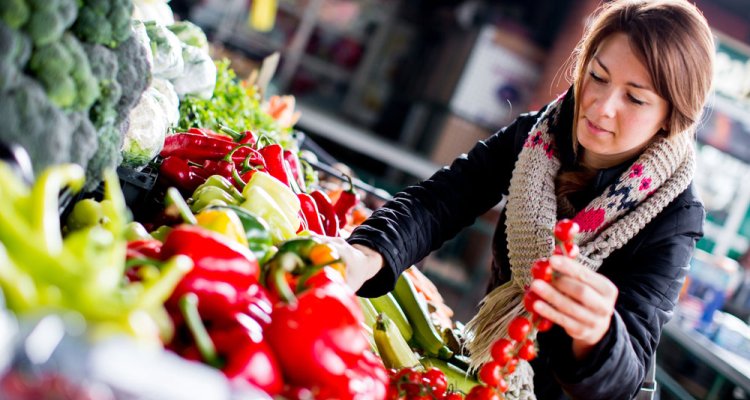
Analysing food security from the context
Thom Achterbosch is a development economist at LEI. He coordinated the recent publication The Food Puzzle: Pathways to securing food for all and pioneered the European research project FOODSECURE: Exploring the future of food and nutrition security, which provides building blocks for a European long-term policy strategy on food security.
What kind of dynamics are happening in the domain of food security?
Food security definitely gained momentum when food prices rose in 2007. There was one development that came clearly to the fore, though it had actually been going on for decades: the slowdown in the food supply on the one hand and the acceleration in demand, triggered by population growth and increasing prosperity, on the other. This two-way trend was further exacerbated by chronic underinvestment in agriculture. Governments in many countries could not or would not invest, the private sector did not see it as commercially viable and neither Western development aid nor the World Bank saw any need. Now food security is universally recognised as a major issue, and solutions are being sought that go beyond production.
So food security is now recognised as an issue, but does everyone have the same vision?
Our vision of food security has broadened over the years. First it was linked to agricultural output and was mainly a question of raising production and narrowing the gap between potential and realised capacity. The next step shifted the emphasis from availability to accessibility and connected food shortages with income and poverty. The third step was to look at what people eat and how they relate to food. In that scenario food security is about nutrition and healthy diets. Basically, the perspective has shifted from quantity to quality and people’s eating habits. It’s no longer about calorie counting or disposal income, it’s about what you do with food.
What is going wrong in countries with food shortages?
The greatest problems are in Africa and Southern Asia, where the problem is malnutrition rather than widespread famine. Famine occurs mainly in regions that are locked in conflict and tends to be temporary rather than chronic. Agricultural systems in Central Africa and Southern Asia are extremely vulnerable for a number of reasons. Farmers have virtually nothing to fall back on, largely because the physical conditions for growing crops and raising livestock are far from optimal. Add to that the weak institutional and infrastructural conditions and it is no wonder that food security is so easily under pressure.
Is ‘more with less’ the answer to food security?
My first answer to this question is that we need to introduce the qualitative element to food security by saying: ‘More and better with less.’ Secondly, we must prevent ‘more with less’ from implying that production is the answer. Technology alone is not the way forward. It can even muddy the waters because it ignores trust among market players. Food security is about behaviour and behavioural changes, about technological innovations that benefit society, about power relations and the organisation of chains and capital flow. In plain terms, anyone who puts forward solutions without involving the socio-political and economic context is blind to the real problems.
What kind of research do you foresee in the future?
I believe that, in the future, solutions will be sought more and more in this broader context. Research on food security will become more complex, but also more realistic. Socio-economic experts are not like technologists: They don´t produce hardware but they can deliver ‘brainware’ – knowledge about how economists work, about the most appropriate socio-cultural solutions and about prioritising social challenges – all of which are essential to food security and can make all the difference.
I can see a challenge in the near future for research institutes like LEI. I expect them to join forces with financiers, manufacturers and other market players that can offer practical solutions. I look forward to some innovative start-ups. That could prove very interesting.
We will also be concentrating our generic knowledge around certain regional areas. If we can map out these regions in detail we will get a clearer picture of the social and natural context in which we need to analyse food security. This will lead to earlier and more concrete recommendations. I see contextualised analysis aimed at delivering practically applicable results as a research field in which LEI, together with colleagues from Wageningen and other institutes, at home and abroad, can make an impact in the years ahead.